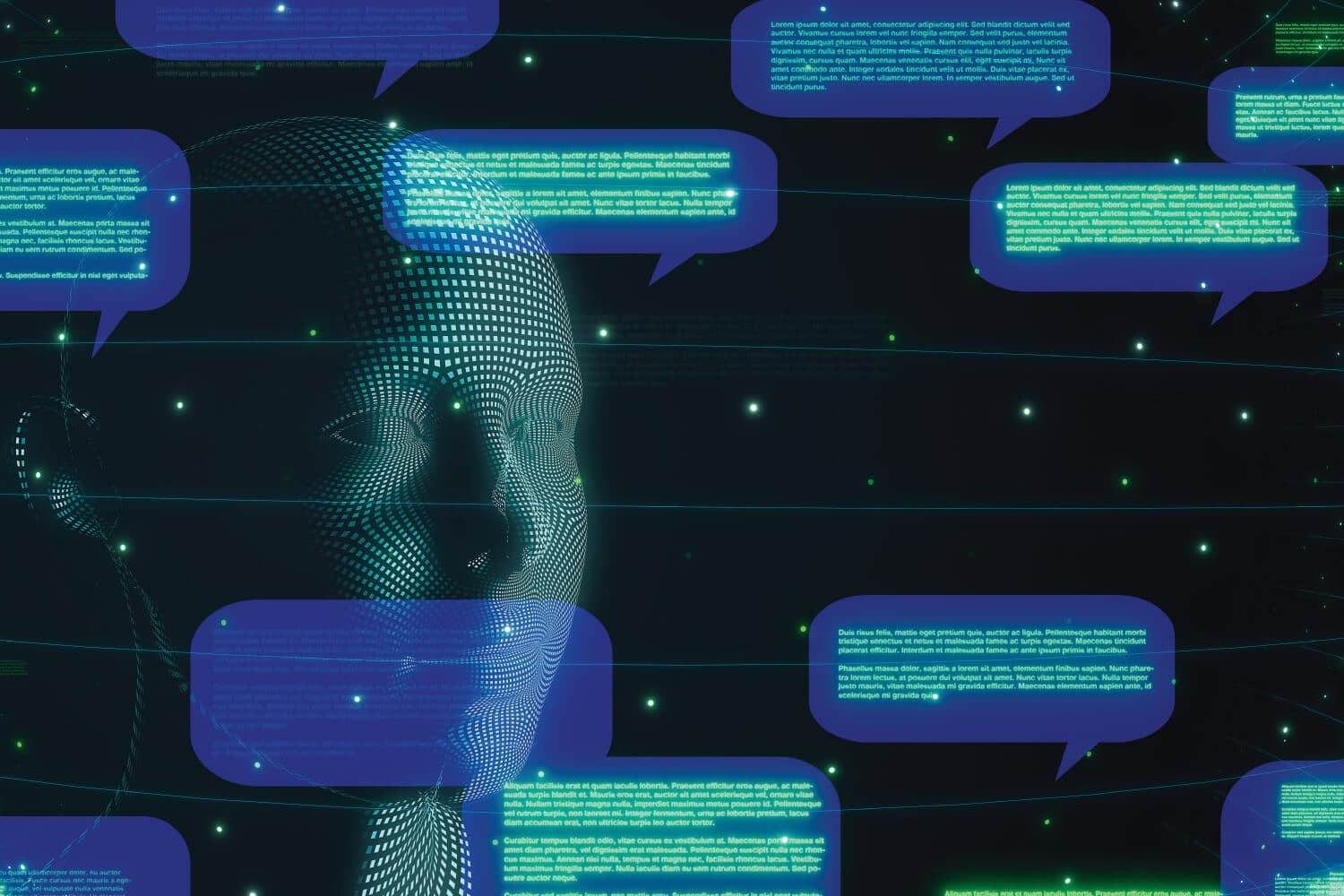AI used to mean Artificial Intelligence. Now, it’s shifting toward Autonomous Initiative.
It’s AI, Jim, but not as we know it.
Imagine an AI that doesn’t just follow instructions but actively makes its own decisions, adapts on the fly, and takes initiative like a human team member with a sharp instinct. This is Agentic AI: autonomous AI agents that operate independently with minimal human input.
AI is all grown up, it’s no longer being told what to wear, what to eat and it can finally choose what it wants to watch on TV. AI is making decisions for itself, and while it still may mismatch socks from time to time, we’ve got a (IT)eenager on our hands (and potentially everything that comes with it).
If traditional AI is a calculator, Agentic AI is a self-driving car that navigates traffic, weather, and detours without a human steering wheel. It’s the next frontier that’s poised to reshape industries and rewrite the rules of business.
What is Agentic AI — and How Is It Different from Traditional AI?
Traditional AI systems function like highly skilled assistants. They require clear commands and operate within fixed parameters. Whether it’s chatbots answering FAQs or image recognition software sorting photos, these AIs perform well-defined tasks under human supervision.
Agentic AI, on the other hand, acts with autonomy. These AI agents can plan, execute, and self-correct toward objectives, sometimes navigating complex problems with little or no human intervention.
Take Auto-GPT, an early example that autonomously researches, plans, and writes reports. It doesn’t wait for every command but instead “decides” what to do next to achieve its goal.
This shift from reactive to proactive AI is monumental, signaling a future where machines take on roles once thought exclusively human.
(See a detailed breakdown at a16z’s Agentic AI article.)
Why is Agentic AI Generating So Much Buzz Right Now?
The buzz stems from two forces converging:
- Technological breakthroughs: Advances in large language models, reinforcement learning, and neural networks enable AIs that can “think” steps ahead.
- Growing business demand: Companies want to automate not just routine tasks but strategic functions like decision-making, problem-solving, and optimization.
For example, Auto-GPT’s public demos have sparked imaginations by showing an AI autonomously launching websites, managing email campaigns, and troubleshooting software bugs.
This leap from passive AI tools to active autonomous agents makes headlines because it’s not just hype, it’s real progress toward AI that can independently create value.
(VentureBeat’s take on Auto-GPT’s potential is a must-read.)
Which Industries Are Embracing Agentic AI First?
While still nascent, several sectors are sprinting ahead:
- Finance: AI autonomously monitors transactions for fraud and adapts to regulatory changes in real time.
- Healthcare: Autonomous systems assist with diagnostics, patient monitoring, and managing clinical workflows.
- Retail & E-commerce: AI manages inventory dynamically, personalizes marketing, and optimizes pricing without manual intervention.
- Customer Service: AI agents handle tier-1 support tickets, troubleshoot common issues, and escalate complex ones—all autonomously.
The common thread is industries where high volumes of decisions, compliance demands, and customer interactions require speed and precision.
Real-World Examples: Agentic AI in Action
One striking example is Devin, an AI “software engineer” capable of autonomously writing, testing, and deploying web applications. Devin independently solves coding challenges and launches apps with minimal human oversight, a massive leap for software development automation.
Another example is AI agents deployed in financial trading. These systems react instantaneously to market shifts, adjusting portfolios without human traders’ input, highlighting autonomous AI’s power in fast-paced environments.
Medium’s feature on Devin shows the practical promise of agentic AI: Read the full story.
Risks and Challenges: Why Caution Is Essential
Autonomous AI’s potential brings real risks:
- Security concerns: Autonomous AI might access sensitive data or systems in ways that increase vulnerability to cyberattacks.
- Accountability: When AI agents make decisions without human oversight, pinpointing responsibility for mistakes becomes difficult.
- Bias & ethics: Autonomous decision-making can perpetuate or amplify biases embedded in training data.
- Unpredictability: Autonomous AI can take actions that deviate from intended goals, posing operational risks.
This uncertainty fuels intense debate among technologists, ethicists, and regulators. Managing these risks is a major challenge for businesses deploying or preparing for agentic AI.
Forbes – Five Potential Risks Of Autonomous AI Agents Going Rogue: Specifically addresses “agentic AI” and its potential dangers, including unrestrained access and autonomy, goal misalignment, autonomous weaponization, exploitation by bad actors, and bias amplification. It also suggests mitigation strategies.
The Future of Agentic AI: Bold Predictions
Industry experts predict that within 3-5 years, autonomous AI agents will be embedded across enterprise systems, transforming workflows and decision-making.
McKinsey projects these autonomous agents will:
- Automate complex scheduling and resource negotiation.
- Optimize supply chains by dynamically adapting to disruptions.
- Detect and respond instantly to cybersecurity threats.
But this future isn’t guaranteed, it requires companies to prepare their infrastructure, workforce, and governance frameworks to embrace autonomous AI safely.
(See McKinsey’s 2023 AI report for deeper insights.)
What IT Leaders Need to Know: Preparing for Agentic AI
For IT managers, business owners, and security leaders, preparation is the name of the game. Here’s how to start:
- Infrastructure Readiness: Can your systems scale and support autonomous AI workloads? Audit and upgrade as needed.
- Cybersecurity: Autonomous AI changes the risk landscape; strengthen defenses to counter new threat vectors.
- Governance: Establish clear policies for AI oversight, accountability, and ethical use.
- Training: Equip your teams to understand autonomous AI’s capabilities and limitations.
- Vendor Management: Scrutinize third-party AI providers for security and compliance.
AI Readiness Checklist for IT Leaders
- Conduct infrastructure audits for scalability and reliability.
- Implement robust, AI-aware cybersecurity measures.
- Develop governance policies tailored to autonomous AI.
- Provide AI education and training programs for staff.
- Evaluate third-party AI tools rigorously.
- Monitor AI behaviors for anomalies.
- Prepare incident response plans specific to AI risks.
- Stay abreast of evolving AI laws and standards.
How CCB Technology Helps You Navigate Agentic AI
At CCB Technology, we’re not deploying agentic AI ourselves (yet). But we’re at the forefront of helping businesses prepare for it.
Our Managed IT Services ensure your infrastructure can handle autonomous AI’s demands.
Our Cybersecurity experts fortify your environment against emerging risks tied to autonomous systems.
And our strategic consulting helps you build AI governance frameworks that balance innovation with responsibility.
Think of us as your trusted partner providing readiness, resilience, and risk management as you navigate this new autonomous frontier, a human touch in an increasingly digital world.
Ready to future-proof your IT and security posture for the agentic AI era? Contact us today (preferably before you hit ChatGPT).





